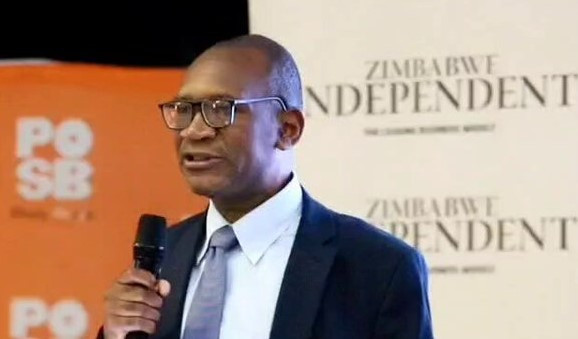
ZIMBABWE’S annual inflation is projected to plunge to single digits by January 2026, a dramatic turnaround from 32,7% in October, signalling what could be the end of the prolonged high-inflation cycle that has haunted the economy for years.
The ambitious forecast was announced by Reserve Bank of Zimbabwe (RBZ) director of economic research and policy, Nebson Mupunga, who attributed the positive outlook to “prudent money supply management” and the accumulation of foreign reserves now exceeding US$980 million.
While industry groups and international institutions have acknowledged Zimbabwe’s progress, they warn that sustaining the current disinflation trend will demand unwavering policy discipline and a determined effort to rebuild public confidence in the local currency.
Speaking at the Zimbabwe Independent Banks & Banking Survey and awards ceremony in Harare yesterday, Mupunga said month-on-month inflation had stabilised at an average of 0,4% since February.
“This means if you were able to buy bread with ZiG, the same amount you used in February can still buy the same quantity of bread. In other words, the currency has actually appreciated,” he said.
“We believe we will maintain this trend going forward … By next year, we expect it to be less than 10%, which is a single-digit level that we need to maintain.”
Mupunga credited the stability to tight control of money supply growth and the design of the ZiG currency, which he said is “fully-backed by reserves at all times”.
However, while Mupunga noted that ZiG circulation had reached 15% within the formal economy, this only represents a small portion of overall economic activity.
- Awards target married couples
- Awards target married couples
- Rampaging inflation hits Old Mutual . . . giant slips to $9 billion loss after tax
- Monetary measures spur exchange rate stability: RBZ
Keep Reading
Officially, the formal sector accounts for about 23,1% of the economy, while the informal sector makes up between 76% and 80%, according to economist Gift Mugano.
He argued that if ZiG circulation were measured across the entire economy, including the vast informal sector, the annual inflation rate would be significantly higher than the RBZ’s projections.
“The government has made a decision, from my observation, to shelve the ZiG. That is why, when they are paying suppliers, they are paying in US dollars,” Mugano said.
“It is wisdom in my view, because if they had continued to use the ZiG, the ZiG would have been buried by now.”
He added that authorities appeared to have accepted the reality that the US dollar is the economy’s dominant currency, which has helped contain inflation.
“They have accepted that the main currency is the US dollar; that is why you see inflation is falling,” Mugano said.
“Why would inflation rise when there is no liquidity of ZiG? The Reserve Bank has a tight monetary policy, they are reining in ZiG circulation. In terms of money supply, it is below 2% if you look at the entire economy, not just the formal sector, because that is not where the real economy is.”
He said the government was essentially keeping ZiG inflation in check by restricting the currency’s availability in the market.
Total ZiG deposits in the economy, estimated between ZiG17 billion (US$645,4 million) and ZiG18 billion (US$683,37 million), are fully-covered by these reserves, according to the central bank, a factor he believes has helped build market confidence.
This stability, Mupunga noted, is central to the government’s plan to establish ZiG as the sole medium of exchange by 2030.
He outlined key preconditions for that transition: achieving durable single-digit inflation, maintaining foreign currency reserves equivalent to six months of import cover and ensuring a stable, efficient foreign exchange market.
“We do not want it to fail again, as past currency reforms have,” Mupunga said, referring to the collapse of previous local currencies, such as the Zimbabwe dollar, which was abandoned in 2009 following hyperinflation.
The progress has drawn international recognition. Following its Staff-Monitored Programme review, the International Monetary Fund (IMF) noted that Zimbabwe’s economic recovery in 2025 was “stronger than previously anticipated”, citing robust agricultural output, solid mining performance and a continued easing of inflation supported by a stable exchange rate.
The IMF’s assessment provides a layer of external validation to the RBZ’s optimistic projections.
Locally, however, the Confederation of Zimbabwe Industries (CZI) has offered a more cautious view.
In its October inflation outlook, the CZI forecast that annual ZiG inflation could decline to around 30% by December, helped by negative month-on-month inflation in recent months.
“The negative month-on-month inflation for the past two months has helped increase chances of this happening,” the CZI stated.
The industry body also highlighted a key obstacle to the government’s de-dollarisation agenda, the continued dominance of the US dollar.
The CZI noted that dollar price stability makes the greenback “attractive as both a transaction and savings currency”, adding that ZiG stability must be sustained over a long period before it can meaningfully compete with the US dollar.
That challenge goes to the heart of the RBZ’s struggle.
After decades of currency turmoil, public trust remains fragile and the US dollar continues to dominate savings and major transactions despite Mupunga’s assurance that the parallel market premium is narrowing and “there is no need for anyone to go to the parallel market”.










